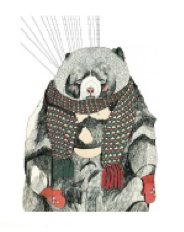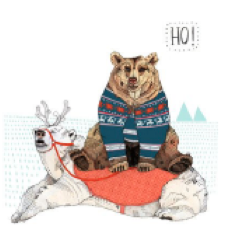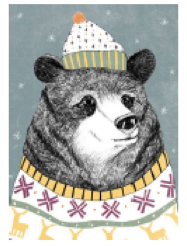Author: Petra Zeiler
Emily Carr University of Art and Design, Vancouver, BC
Abstract: As the size of imagery influence develops throughout the digital and physical realms, we must understand the boundaries between stealing and appropriately borrowing from each other’s styles, techniques, and ideas in art. Within this article, I will discuss the methods in which we can avoid copying others and strive to generate something unique in a world saturated with imagery. I provide key examples of artists who have imitated successfully and those who have not and committed forgery.
Keywords: imitation, forgery, appropriation
As illustrators in a world oversaturated by imagery, we are constantly borrowing ideas from others. Idea and image theft have become more complicated simply because nowadays, everyone acts in some form of imitation. Aristotle notes, we are always imitating, and this behavior comes innately to us ever since birth (Lucas). As artists, we rely on tradition for guidance and inherently choose to mimic the artists who attain success (Lunn 20). Within this article, I will consider the ways in which we can steer away from merely copying others and strive to generate something unique, or embrace the world of influence and steal appropriately. I will be referencing Henry Lunn’s (1859-1939) article, Imitation and Antoon Van Den Braembussche’s, Thinking Art, which both examine the constructs of imagery influence in history. I will also offer examples of artists who have imitated aptly, like Andy Warhol (1928-1987), and those who have performed forgery. I aspire not to provide one simple conclusion but to bring about further discussion and questions in relation to the topic. Therefore, we aim to answer the question, how can we present original and innovative ideas with an overload of artistic influence in the modern day?
First, we must look at the role of imitation throughout history and how it is established in today’s culture and arts. Art is a recreation of reality, to create the actuality ‘anew’. In the Renaissance and Baroque periods, imitating your masters was the way an apprentice learned to draw or paint and was presented as an artistic challenge (Braembussche 21). While in today’s culture, there is an abundant amount of inspiration that the importance of idolizing names is more significant than the genuine art. It is important to make these cultural distinctions in order to gain a better understanding of stylistic imitation and begin to delineate how it has been altered throughout different contexts in history. So, why has the imitation of a style become something not commonly accepted and when is it applicable to do so in an art practice?
We ought to look at our incentives as artists to imitate in a different manner than those of earlier eras. By this, I mean that we must choose to use that inspiration in an appropriate matter. One must find a balance between innovation and imitation. Within “Tradition and Individual Talent”, T.S. Eliot proclaims that instead of looking at how unique a piece of art (or poem) is, we need rather to look at how the artist has added tradition and incorporated past techniques (43). This statement asserts that art is always of the past and present, no matter what time or age there will always be an influence. Andy Warhol is an apt example of imitation, as he did so by mimicking commercialism and even after his decease he still acts as an imitator within popular culture. His famous pop culture past is even still present as seen in the “The Warhol: D.I.Y. POP” application available for iPhone users, which turns any picture into an ‘Andy Warhol silkscreen’ (fig. 1). Warhol has gained a lot of criticality because of the informal way his art is easily distorted. Why is Warhol’s work praised and easily manipulated more often than other credited artists? I deem that there is a persuasive myth that surrounds Warhol’s art that has become an academic construct because we can acquire familiarity with it. The context of the art that is presented is what makes the piece original or not (Braembussche 61). So, as artists can we draw a line between being influenced by and stealing from other creative art or ideas in the present day? By looking at Warhol’s fame, do we want to borrow from each other?
Stealing an illustrator’s style is different than practicing their technique. In varying contexts, artists can practice others techniques, however, to avoid stealing a style they must apply it back to their practice. An example could be learning how one illustrator paints facial features, however instead of directly copying that method one must include features of that technique into their habits. In our time, artists use the same techniques as their previous mentors or influences. However, the appropriated factor derives from the original concept of an artwork and the parallel that arises from the initial artist. Even the same object could be considered being different each time you see it because the circumstances surrounding the viewing have changed (Berger).
Pablo Picasso famously quoted, “Good artists copy, great artists steal.” Artists who dare to imitate must be aware that credit has to be given to the original if their art bears similarities. It is alleged that great artists take from original art but create something completely of their own, where no credit needs to be given. As an example, we will discuss the case between Julia Pott, a highly acclaimed illustrator and animator and Maxine Carsboult, a student who blatantly stole the style and concepts of Pott’s illustrations. This can be seen in Pott’s pillow design, Big Bear (fig. 2) and Carsboult’s imitation (fig. 3). In this case, Carsboult exemplified forgery, creating and selling works of art without proper credit. This style of Julia Pott’s illustrations is also seen in works of Sandra Dieckmann (fig. 4) and Lu Green (fig. 5), both professional illustrators. The anthropomorphic use of bears in sweaters is conceptually and stylistically similar in each; they all perform a style of textured mark making and are wearing patterned clothing. In this case, it does not matter who the first influence was, my question is how can all the artists get away with the similar illustrations and still make profits from them? Is it fair to say that it might be because they have graduated to a professional level of illustration, like the other famous artists have done and if they can get away with it, can we consider them to be ‘great artists’?
There is such a large community full of presumed artists and illustrators who are all trying to do the same thing, produce art and make a living. Within the twenty-first century, we fathom imitation in art differently than artists did in the Renaissance period. We must form a balance between innovation and imitation for others to be intrigued by an artwork. We have briefly looked at the influence of Warhol and the way in which artists like Julia Pott and Sandra Dieckmann can be successful with shared concepts and styles. There is no way to unravel these questions entirely, but only to compare them to your practice and think about the ability imitation may or may not have on your art. However, more questions stem from the answers; is the age of imitation fleeting and are we going into a new stage of repetition and uniformity? What happens next?
Works Cited:
Berger, John. Ways of Seeing. London: British Broadcasting, 1977. Print.
Braembussche, Antoon Van Den. Thinking Art. Dordrecht: Springer Science and Business Media, 2009. Print.
Eliot, T.S. “Tradition and Individual Talent.” The Sacred Wood. New York: Alfred A. Knopf, 1921. 42-53. Print.
Lucas, D. W. “Aristotle Poetics.” The Classical Review: 168. Print.
Lunn, Henry. “Imitation.” The Musical Times and Singing Class Circular 19.419. (1878): 20- 21. Print.
Fig. 1
The Warhol: D.I.Y. POP. Computer software. Vers. 3.0. Apple, 23 Feb. 2015. Web. 18 Mar. 2015. <https://itunes.apple.com/ca/app/the-warhol-d.i.y.- pop/id442963936?mt=8>.
Fig. 2
Knitted Bear. By Julia Pott. <www.juliapott.com>.
Fig. 3
No title. By Maxine Carsboult. <http://youthoughtwewouldntnotice.com/blog3/tag/maxine‐carsboult/>.
Fig. 4
Bear Sleigh. By Sandra Dieckmann. <http://www.sandradieckmann.com/etsy/85256368>.
Fig. 5
No title. By Lu Green. <http://lugreen-illustration.com/Postcards>.




